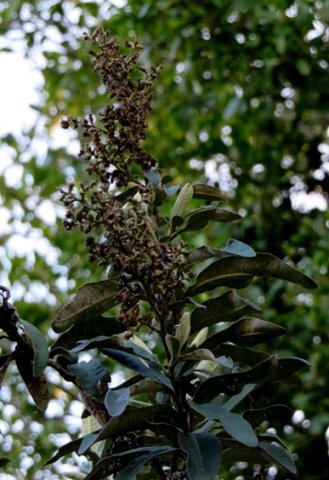Tarchonanthus

Author: Ivan Lätti
Photographer: Thabo Maphisa
Tarchonanthus is a genus of dioecious and aromatic trees and shrubs in the Asteraceae family.
The simple leaves are alternate and stalked or short-stalked. Leaf margins are entire to coarsely toothed or three-lobed near the tips. The blades are of two colours, persistently hairy or woolly on their lower surfaces.
The hairy to woolly flower clusters grow in stem-tip or leaf axil panicles. Yellowish disc florets are held together by cylindrical, bell-shaped, or almost spherical involucres of bracts in one or two rows. The flat or convex receptacle is honeycombed, sometimes with long, silky hairs but no scales.
Male florets have tubular or funnel-shaped corollas, hairy or woolly on the outside and ending in five recurving lobes. The four- or five-lobed female florets have corollas shorter than the ovaries and hairy or woolly outside, up to three florets per head. The oval style branches are short and flat.
The dry single-seeded fruits are ellipsoid or obovoid (inversely egg-shaped), lacking pappuses but woolly.
There are about 8 species of Tarchonanthus, all occurring in southern Africa.
The wood is often hard, at least in some cases termite proof, used in making cabinets and musical instruments, also in boat building. Some of the trees are used in horticulture and for stabilising coastal soil and sand. Plant parts of some species feature in traditional medicine. The leaves of some are browsed by game. Long ago, or not so long ago, the leaves were smoked as a narcotic or euphemistically as a sedative.
The photo shows Tarchonanthus littoralis (Leistner, (Ed.), 2000; Coates Palgrave, 2002; Van Wyk and Gericke, 2000; Pooley, 1993).

